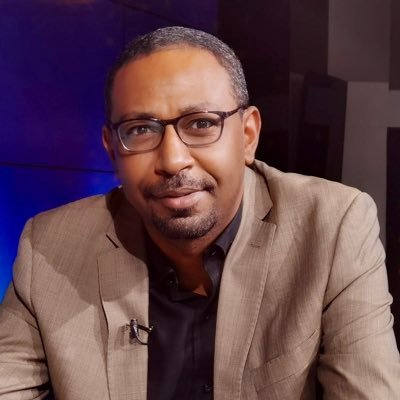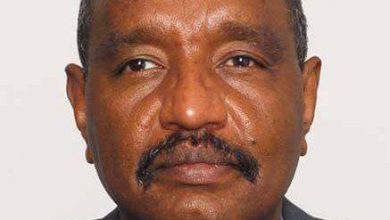Opinion
De-ethnicizing Sudan’s War (1-2)

By Amjad Farid
Since the outbreak of the war in Sudan on April 15, 2023, various parties have attempted to distort the nature of the conflict, crafting false narratives to justify their alignment with one side—specifically the paramilitary Rapid Support Forces (RSF). By framing the war as an ethnic and regional conflict, these narratives aim to obscure its reality as a violent power struggle.
Recently, some politicians have revived claims that the war is not between the Sudanese Armed Forces (SAF) and the RSF, but rather between social groups in Sudan. However, the first report from the Sudan Conflict Observatory at Yale University’s MacMillan Center for International and Area Studies—which uses satellite imagery and was established in June 2023 with support from the U.S. State Department—debunked this notion. The report confirmed that the war erupted due to the RSF’s moves to seize power on the morning of April 15, 2023. Sudanese citizens didn’t need satellite images to affirm this; they witnessed the RSF mobilizing to besiege the Merowe airbase in northern Sudan as early as April 13. Despite this clarity, efforts to misrepresent the war continue in an attempt to legitimize the RSF’s political presence.
The RSF and its allies initially claimed they were fighting for democracy, civilian transition, and against Islamist rule—echoing the slogans of Sudan’s December Revolution, which ousted former President Omar al-Bashir. However, the RSF’s violations quickly discredited these claims. Now, the RSF relies heavily on portraying the war as an ethnic conflict, a narrative it uses not only for propaganda but also as a recruitment tool.
This misleading discourse draws from Sudan’s troubled history, highlighting genuine past abuses by its military and security apparatus. Yet, it selectively weaponizes these truths to condemn one party while obscuring the shared culpability of both warring factions. The SAF and RSF were both integral to Sudan’s military-security system, responsible for atrocities and tragedies under the same political agendas and power structures.
The RSF, however, is arguably the most egregious product of this system. Any comparison between the two sides must consider their conduct since April 15, 2023. But past crimes cannot justify present atrocities; attempts to rationalize today’s violence by invoking history are simply a cover-up for ongoing abuses. The correct stance is to condemn violations both past and present and to work toward preventing their recurrence.
The RSF’s Role in Ethnic Violence
During the Darfur war in 2003, ethnic dimensions were starkly evident. The RSF—whether in its current form, established in 2013, or its earlier incarnation as the Janjaweed militias—fought alongside the SAF, perpetrating systematic ethnic violence and crimes against humanity. These included mass killings, rape, forced displacement, and even ethnic cleansing targeting African communities in Darfur, such as the Zaghawa, Fur, and Masalit peoples.
The RSF’s crimes extended beyond Darfur to South Kordofan’s Nuba communities, where similar atrocities were committed. In the current war, the RSF has replicated these patterns, again targeting the Masalit in West Darfur early in the conflict. Their actions, including the brutal killing of West Darfur Governor Khamis Abakar and the mutilation of his body after the Genena massacre in June 2023, were marked by overtly racist celebrations. The RSF has continued to perpetrate ethnic-based crimes across Darfur, prompting the U.S. House of Representatives to pass Resolution 1328 on November 20, 2024, recognizing the RSF’s actions in Darfur as genocide.
Contradictory Narratives
In central Sudanese regions such as Khartoum and Al-Jazirah, the RSF has adopted an opposing narrative of “anti-Jalaba” racism. The term “Jalaba” refers to Sudanese of Arab descent and has been politicized to denote central governments dominated by Arab elites. The RSF has committed mass killings, rapes, and widespread property theft against these groups, even poisoning farmland and water resources in Al-Jazirah. This contrasts sharply with the RSF’s ethnonationalist rhetoric in Darfur, where it uses Arab supremacist discourse to recruit and mobilize fighters.
The RSF’s pattern of violence in central Sudan is not new. Its emergence as a force under General Mohamed Hamdan Dagalo (Hemeti) can be traced back to its brutal suppression of the September 2013 protests, during which it reportedly killed over 200 peaceful demonstrators. Granted legal immunity and state backing, the RSF became a tool for repressing dissent, a role it escalated during the June 2019 massacre at the Khartoum sit-in, carried out in partnership with the SAF.
Sudan’s current conflict is deeply socially complex, but the RSF’s contradictory ethnonationalist narratives expose the falsity of its claims to ethnic representation. Meanwhile, the willingness of political allies to embrace such narratives reflects their opportunism, exploiting ethnic rhetoric to justify violence and secure temporary gains at the expense of Sudan’s unity and stability.



